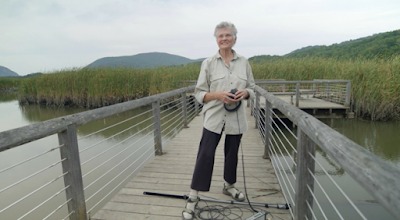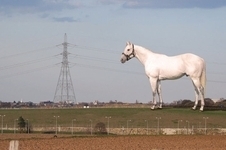Annea Lockwood's A Sound Map of the Danube has just been released. The New Music Box has an excellent interview conducted with Lockwood in 2004 in which she describes working on this project. One of the main problems was actually recording sounds that convey a riverscape when the Danube flows through cities that
"pave its banks with stone and rock. All of them run roads right along the bank [laughs] I haven't recorded the Danube in any of them. I haven't recorded the Danube specifically in Vienna. I went up in the Vienna woods and recorded a tributary. I haven't recorded it in Budapest. I went south of Budapest to an island and found a great recording about a half an hour south of Budapest. Where else have I not recorded the Danube? [laughs] I didn't record it in Belgrade. I wanted to very much. So I went to where the Sava River flows into the Danube thinking, perfect spot, major tributary, major confluence, and there wasn't a peep. Not even a little wave action. I'm recording in tiny little spots, really out of the way places, and finding really wonderful sounds."
In her notes to the album she describes how the landscape 'composes itself':
"I recorded from the banks, finding a great variety of water sounds as the gradient and bank materials changed, often feeling that I was hearing the process of geological change in real time. Towards the end of the final field trip, while listening to small waves slap into a rounded overhang the river had carved in a mud bank in Rasova, Romania (CD 3 track 2), I realised that the river has agency; it composes itself, shaping its sounds by the way it sculpts its banks."
Lockwood's Sound Map of the the Danube was preceded by her Sound Map of the Hudson River, a brief watery extract of which can be heard here. However, she began recording rivers in the sixties:
"I started recording rivers back in the '60s, again when I was in England, because I was interested in trying to discover why they are so magnetic to us, why people love to go to river banks, what their ears are reaching for as well as their eyes, and what our bodies respond to in rivers. At the same time I was aware that for city people—many of the world's major cities are on rivers, right—for city people, rivers are usually entirely visual. They're not sonic entities. They're not sound worlds. I wanted to bring a river into the body in a different way than through the eyes."
Postscript April 2021
This is a screen grab from a short film, 'Annea Lockwood / A Film About Listening' which I watched this week on the Counterflows website. In the thirteen years since I wrote this post Lockwood has made further landscape-related recordings, including A Sound Map of the Housatonic River.






.jpg)